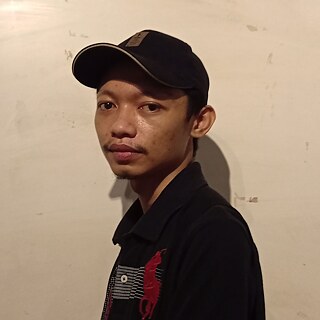Arthouse Cinema - Wim Wenders
Der Amerikanische Freund (The American Friend): the indigenization of novels and liberation from dominance

Ripley's Game is a thriller written by Patricia Highsmith, an American novelist whose works have been adapted for film and television a number of times. At least one of Highsmith’s books has been filmed every decade since the 1950s (McFarland and Schwawanebeck, 2018, p. 2).
Wim Wenders, a director of the New German Film generation, adapted Highsmith’s thriller Ripley's Game for the screen as Der Amerikanische Freund (The American Friend). It was produced from 1976 to 1977 in an era when America greatly dominated Europe in many areas, including the film world.
The European reaction to this dominance in the film industry after WWII was the emergence of new cinema movements. In Germany, the revival of a stagnant German film scene became known as New German Film. Wenders’ film addressed American dominance.
Highsmith’s novel Ripley's Game speaks less of American dominance than of Tom Ripley’s attempts to avenge himself by manipulating Jonathan Trevanny, a French citizen, frame maker and good worker who is intent on ensuring the survival of his family. Ripley is an American expatriate and represents America’s presence in Europe.
The American representation in Wenders’ film is more than that—it is dominance. Ripley, a dealer in forged paintings, plays and manipulates Jonathan Zimmerman (in Highsmith’s novel his name is Jonathan Trevanny; hereinafter “Jonathan” refers both to the character in the novel and in the film). The film character Ripley is enhanced by wearing a cowboy hat despite living in Europe. “What’s wrong with a cowboy hat in Hamburg?” he asks. Similarly, Ripley’s house looks a lot like the US White House, and he mentions that the American hospital is the best treatment center in France, where Jonathan goes to have his illness diagnosed.
Intensifying the problem of dominance through conversion
Wenders’ adaptation focuses on the question of American dominance in the German context through changes in the country, location and origin of the characters. Wenders converts a source so that it can be used for a specific context and purpose, as Linda Hutcheon explained concerning the indigenization of the screen adaptation. Hutcheon explains the indigenization by using an analogy: different electrical voltages can be adapted for specific applications. “Adapters convert the mains voltage to a form that is useful at a certain location and in a certain context” (2006, p. 150). The novel Ripley's Game became a source (several mains voltages) for Wenders to transform into a film with issues related to the German context.Ripley's Game is set mainly in France, where Ripley and Jonathan live (Jonathan Trevanny is French). In Wenders’ adaptation, Jonathan is of Swiss German descent and lives in Hamburg; Ripley is American and also lives in Hamburg.
Ripley's Game, a third person narrative, is primarily told from Ripley’s point of view. We read from the beginning about Ripley’s resentment toward Jonathan and gain insight into the moral considerations that make Ripley look like an admirable figure, leading the reader to sympathize with him, reinforced when he comes to the foreground in the story. At the end of the novel, we also read Ripley’s assessment of Jonathan sacrificing his life for him, and Jonathan’s wife hiding Ripley’s identity. Jonathan and his wife have no voice of their own, no point of view.
Wenders modifies the points of view by intensifying Jonathan’s perspective. As Christopher Breu remarks, the camera often shows Jonathan’s perspective through shoulder shots, his reactions, single shots and other cinematic devices (Schwanebeck and McFarland, 2018, p. 197). Though the film begins with Ripley, we don’t hear how he seems to be a “victim” of Jonathan's suspicion, as is the case in the novel. In contrast, Wenders positions Ripley at the beginning of the film as a criminal selling forged paintings. Jonathan creates suspicion about him as is the case in the book. The heart of the story shifts from Ripley to Jonathan, and at the same time the American perspective in the novel shifts to the German perspective in the film.
The German protagonist who opposes America’s influence
The forged paintings story element also appears in an earlier novel of Highsmith’s Ripley series. When Wenders takes up the matter of paintings again, however, he brings the two figures together at an art auction and highlights Ripley’s involvement in forged paintings. Jonathan’s assassination attempt does not target the Italian Mafia, as in the novel, but a gang of pornographic filmmakers in Germany. It seems that these two changes linking history to the world of art and cinema are Wenders’ way of addressing the dominance of American culture in Europe to include art and cinema, as do other personalities of New German Film.As if Wenders wanted to reject the associated ruling conditions, he liberated Jonathan from Ripley’s game at the end of the movie. In the novel, the story ends with Ripley’s success in his game with Jonathan, who doesn’t see it as such. Wenders ends his film, however, with Jonathan leaving Ripley and his games. Instead of getting involved in Ripley’s dominance and game, Jonathan is freed by Wenders.
Jürgen Schluck poses a significant difference between Jonathan and Ripley (in W. A. Cook, p. 403). The contrast has to do with the work of the two and focuses on their respective culture-specific backgrounds: Germany (Jonathan Zimmermann) and America (Tom Ripley). Jonathan’s work is based on craftsmanship, Ripley’s on the commercialization of counterfeit art, and this difference appears to indicate Wenders’ cynical view of art in both areas.
By using Ripley's Game as starting material, Wenders’ film discusses American themes that “go around the world” in Germany, especially regarding their “games” as represented by Ripley. Wenders chooses a narrative that liberates itself and shows awareness of the “game” via Jonathan, but it also reveals Wenders’ adaptation process.
Author
